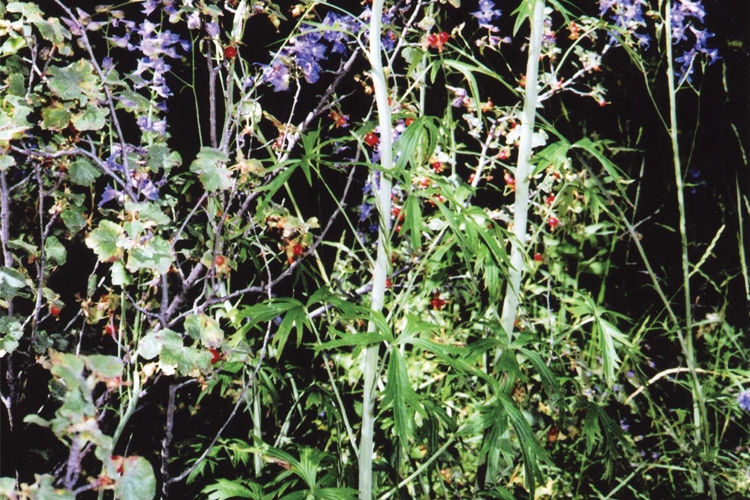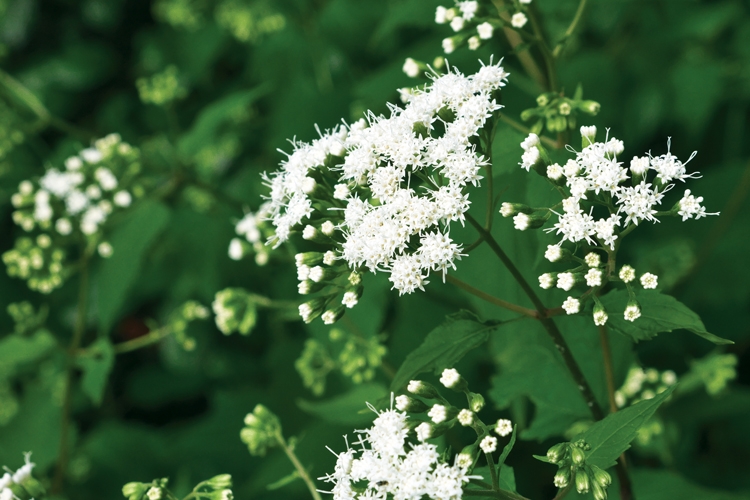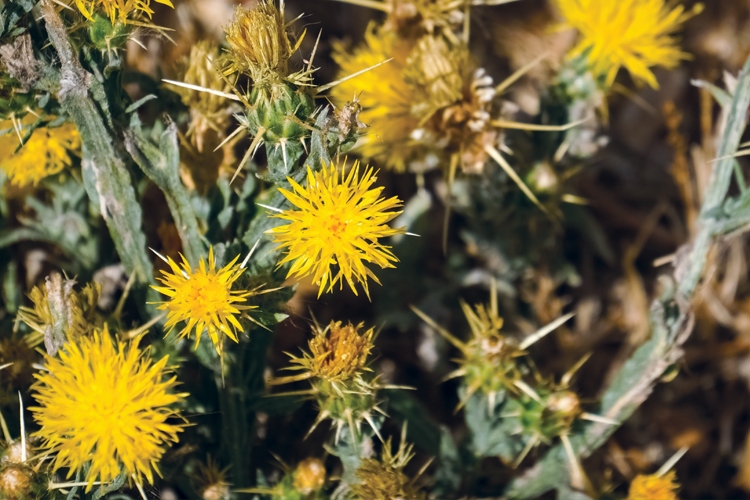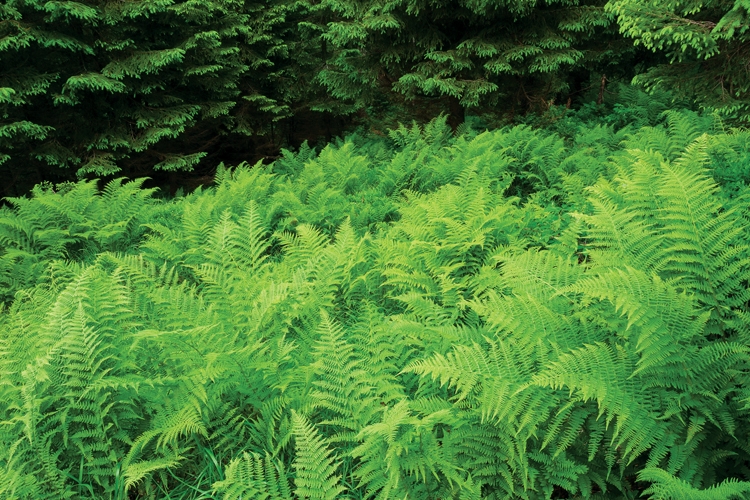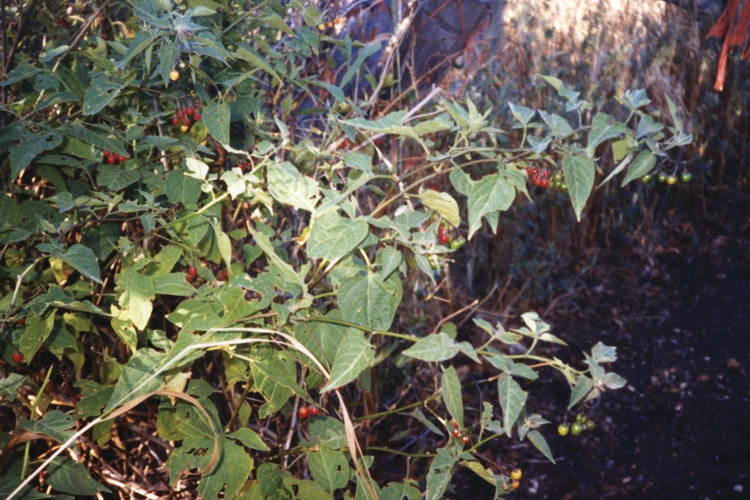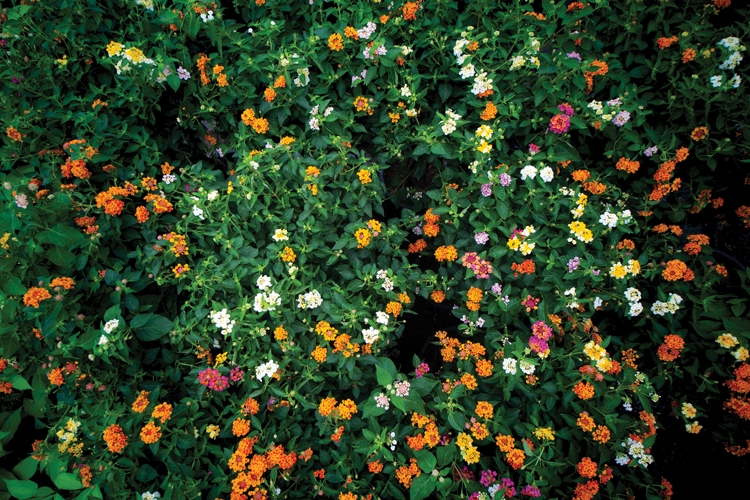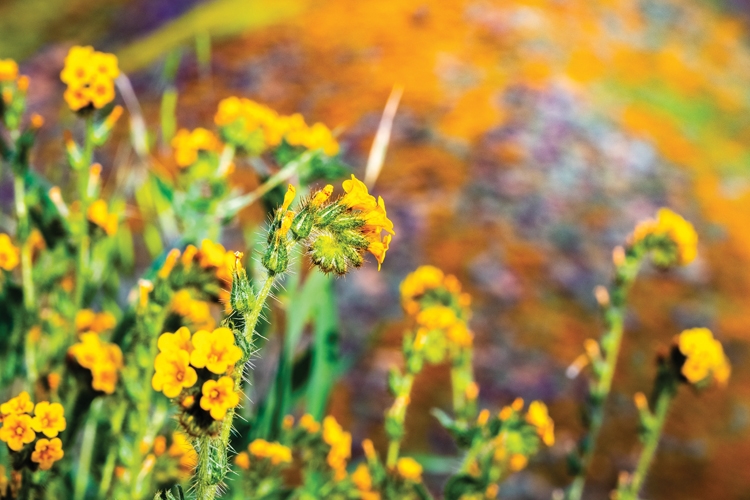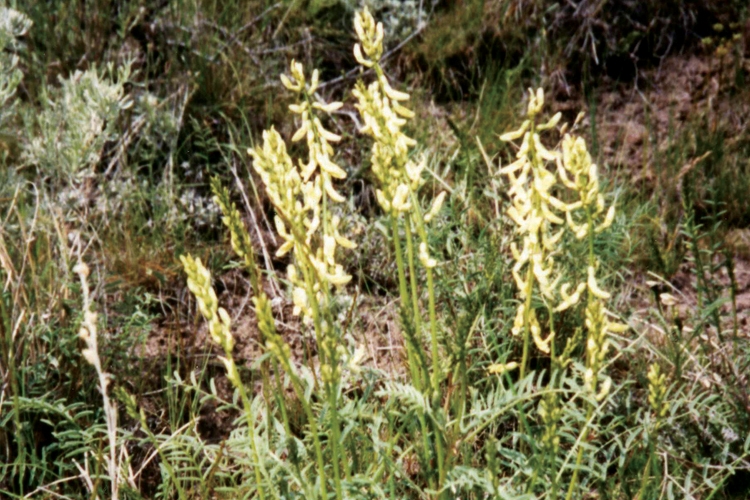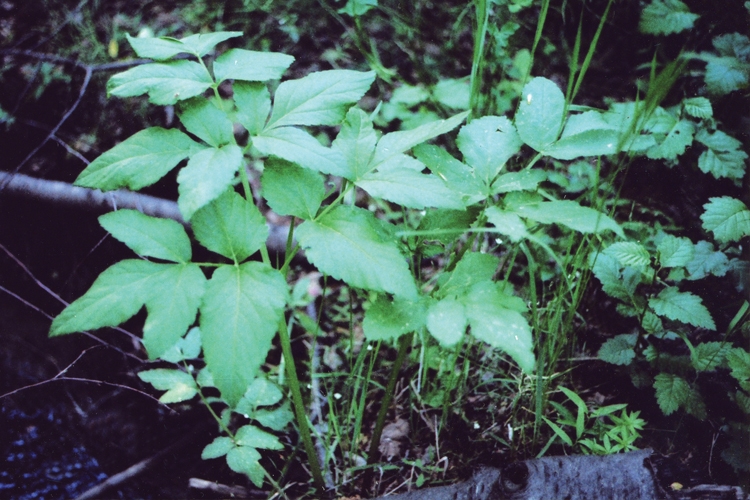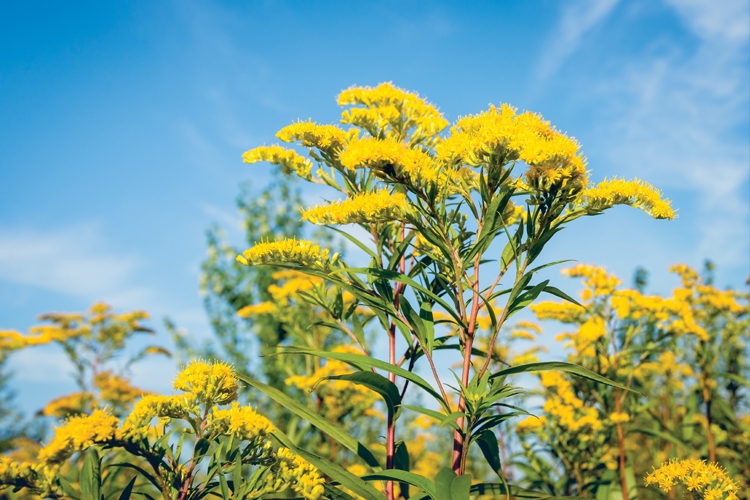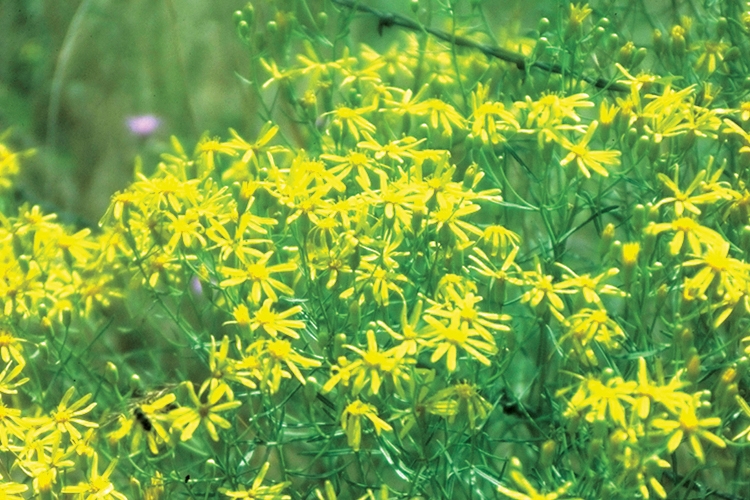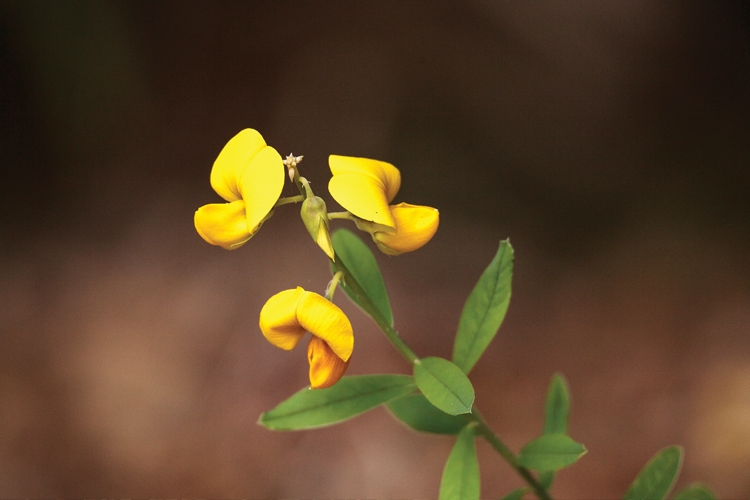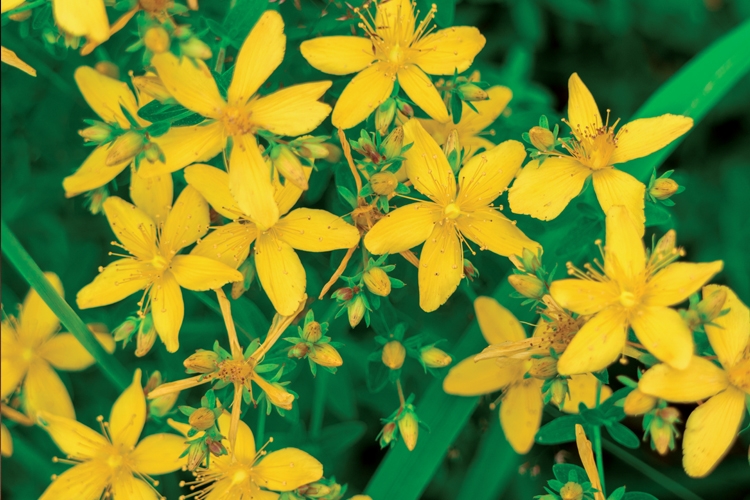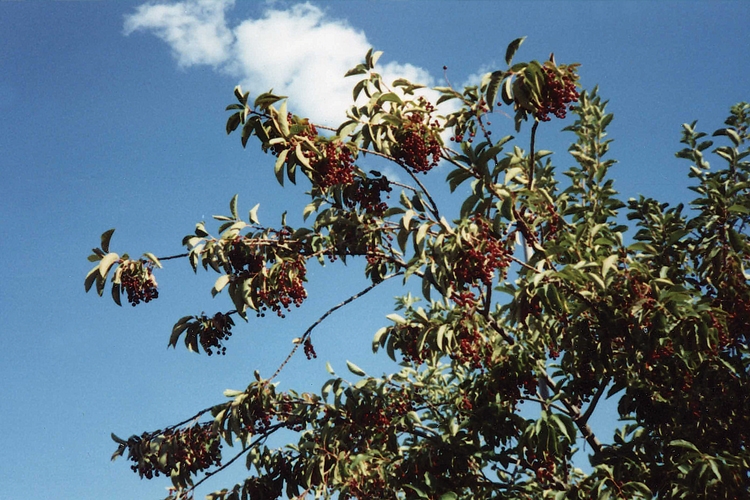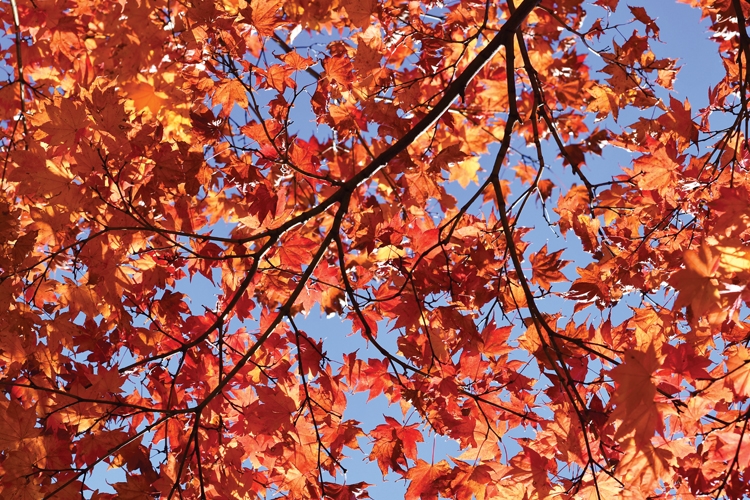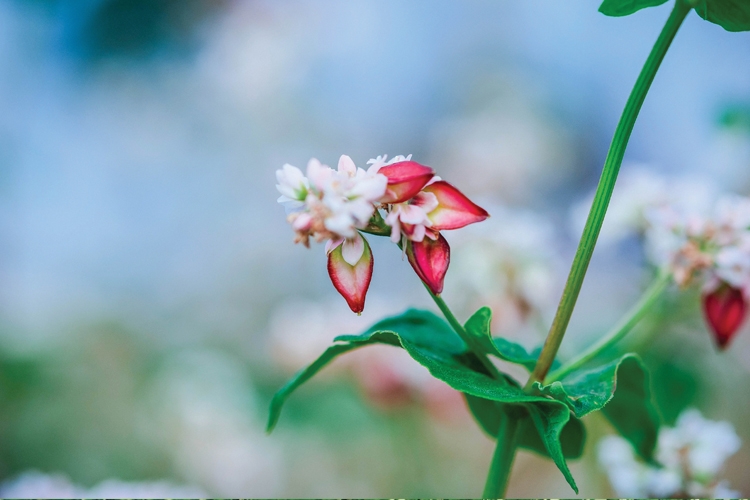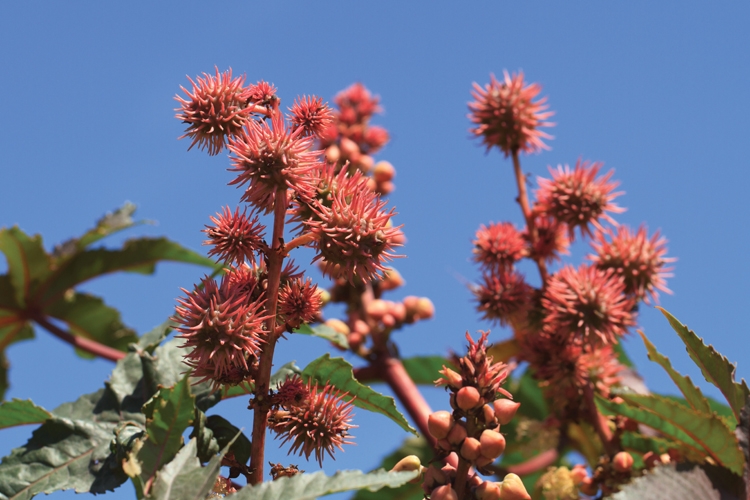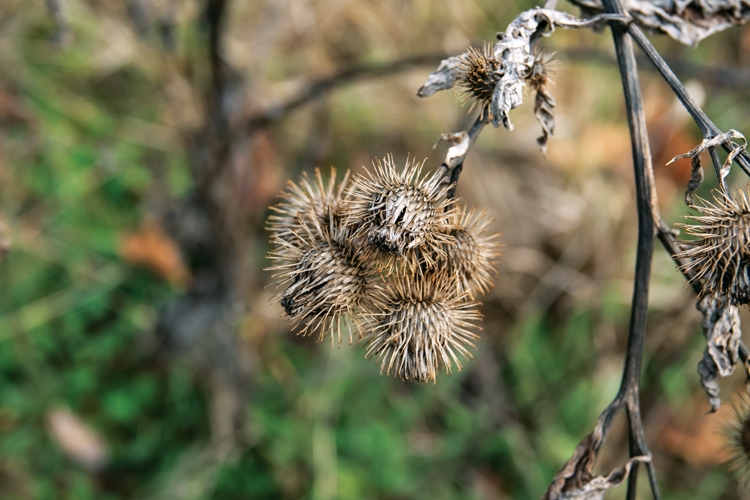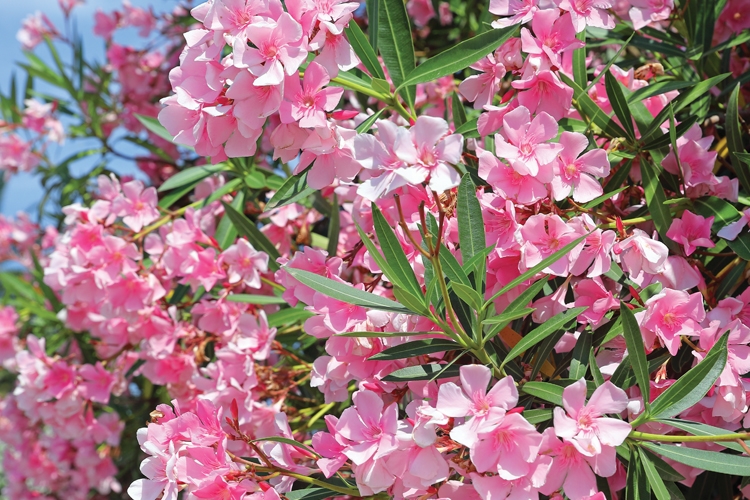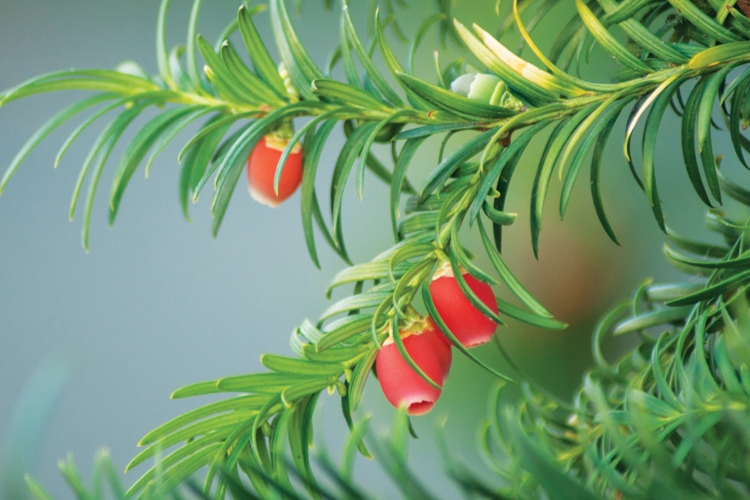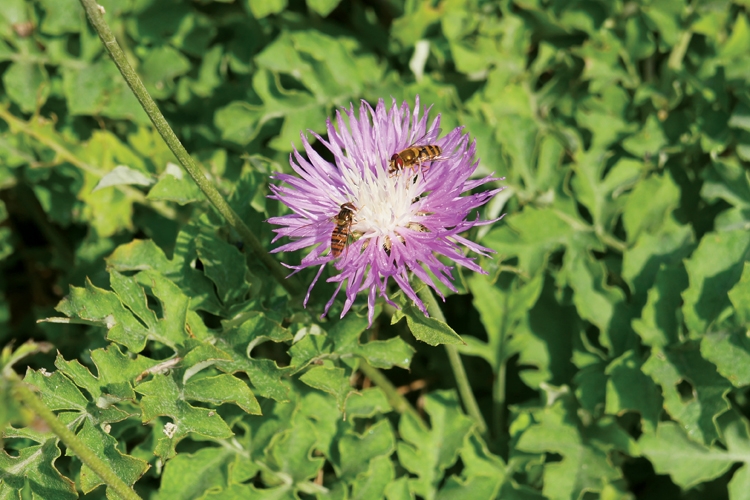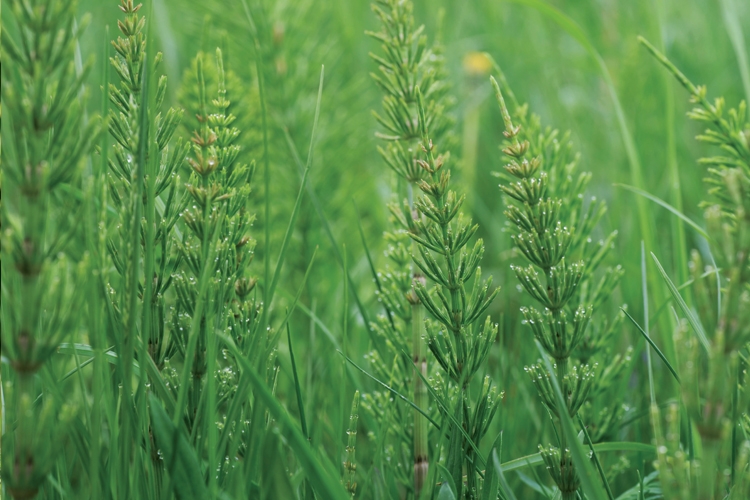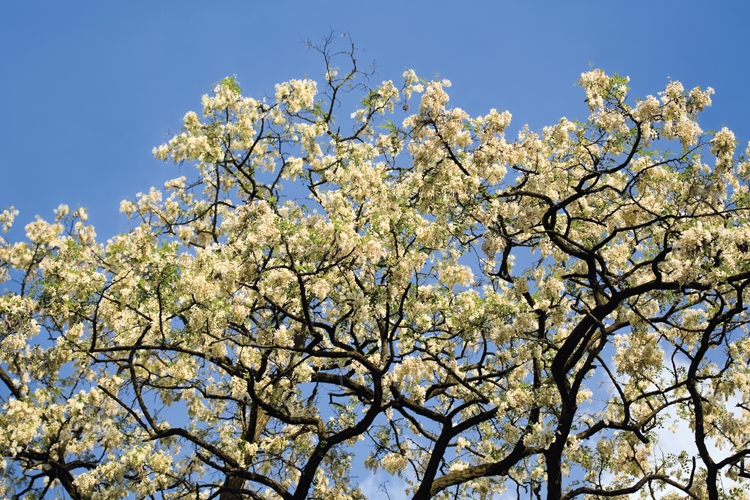
Plants Toxic to Horses
Most poisons that affect horses are found in toxic plants that contain dangerous alkaloids. Some of these are so deadly that they can kill a horse quickly even if a very small amount is ingested, whereas others are lethal only after many small doses accumulate to dangerous levels in the body.
Most poisonous plants, trees, shrubs, and grasses vary in level of toxicity and the conditions in which poisoning occurs, but others are extremely poisonous at all times. Some are harmless in small amounts or during certain seasons, but become dangerous if eaten in large amounts or if they are chemically altered by freezing or enzyme activity such as when cyanogenic glycosides in chokecherry leaves turn into hydrogen cyanide. Certain plants absorb substances from the soil that accumulate to toxic levels, such as selenium does in locoweed.
Horses typically avoid poisonous plants, but hunger, curiosity, or boredom may lead them to eat things they shouldn’t. They may nibble shrubs through the paddock fence or eat plants along the trail when you ride if you aren’t paying attention. Horses may also eat harmful plants inadvertently baled in hay or raked into lawn or hedge clippings. Some of the plants and shrubs used for landscaping in the yard, garden, barnyard or fairgrounds, or along a fence row, road, or trail may be poisonous. Most poisonous plants that might be eaten by horses are “forbs” — broad-leafed flowering plants. Only a few grasses are dangerous to horses.
If you suspect a horse may have eaten something toxic or is showing behavioral changes or digestive upset, get veterinary help immediately. Some types of poisoning are irreversible and fatal, while others can be resolved with prompt emergency treatment.
Plant poisoning should be suspected if horses experience sudden illness or death after being moved to a new pasture or fed different hay. Poisonous weeds in hay can be a serious threat because hay-fed horses typically have no other food options, unlike a horse at pasture. Some horses sort out strange weeds in hay, but greedy eaters may eat them despite their taste or smell. Even a not-so-hungry horse may eat harmful hay because the strange and unpleasant taste or smell may be diminished in the drying process before baling.
There are hundreds of plants that can be toxic to horses, but some only grow in certain regions of the country. Becoming familiar with those that might be a threat to horses in your own geographic region and climate is important. Some grow wild and might be in fields or pastures, while others might be found in your own yard or garden.
Garden flowers and plants poisonous to horses include, but are not limited to, buttercup, narcissus (daffodil), lily of the valley, and delphinium. Wild delphinium is called larkspur. Tall larkspur is highly
poisonous to cattle, but not as deadly to horses. However, if a horse exerts after eating delphinium, he may die from impaired muscle activity and impaired breathing. Rhubarb leaves contain soluble oxalates that crystallize in the kidneys causing kidney failure and death. Don’t let a horse eat in your yard or garden and never let them eat any plant that is not a part of his regular diet, especially if you are not familiar with it.
Common Offenders
Here is a list of some of the more common toxic plants found in various parts of the U.S.
• Brackenfern is a large perennial herb that grows in burned-over areas, woods and shady places, but it also grows on dry, sandy, or gravelly soil. Horses will consume this plant when other feed is scarce, when it is mixed in hay, or when they are allowed to grab a snack along the trail. This fern contains an enzyme that inhibits absorption of thiamine (vitamin B1) in the gut. Because the affected horse cannot absorb the B1, symptoms present as vitamin B1 deficiency, including deteriorated nerve function, loss of coordination, weight loss and depression. The horse will stand with back arched, legs apart and muscles twitching. Symptoms develop slowly over days or weeks after eating a large amount of fern and if affected horses are not treated, they will eventually die, however, if the horse is taken off the offending feed and treated with IV injections of thiamine hydrochlorate when symptoms first appear, he will most likely recover.
• Castor beans are grown as a crop for castor oil in California and the Southwest and also as an ornamental plant in other regions. The seeds are the most toxic part of the plant causing mild colic, diarrhea, sweating, and a thundering heartbeat. Only a few ounces of castor beans can
kill a horse.
• Cocklebur is an annual plant that grows in lakebeds, lowlands along rivers, and disturbed soils of fields, pastures, and roadways. Poisoning from this plant occurs mainly when horses eat the leaves in early spring because seedlings are more toxic than mature plants. Symptoms include: rapid and weak pulse, labored breathing and spasmodic contractions of the leg and neck muscles.
• Crotalaria, a member of the pea family, contains pyrrolizidine alkaloids that destroy the liver. In the Midwest, the plant is called “rattleweed.” In Florida, it may be called “showy crotalaria.” The effects of liver damage may not show up right away because the liver is a large organ that continues to function until about 60% has been destroyed. Then, liver failure is quite sudden, with the horse dying within three to five days.
• Death camas grow on foothills and pastures in western and plains states. It takes less than 10 pounds of it to kill a horse, but the bulb (root) is the most deadly part of the plant. In moist soil, the root may pull up and be eaten. Symptoms of poisoning are excessive salivation, weakness, difficulty breathing and coma. Death occurs soon, within a few hours to two days after ingestion.
• Equisetum is also called horsetail, scouring rush, or jointfir. Several species grow in meadows and floodplains or wherever the water table is high. These plants may end up in meadow hay. Poisoning is cumulative and may occur after horses eat hay containing large amounts of horsetail or graze it in the pasture. Symptoms include excitement, muscle weakness, trembling, staggering, diarrhea and loss of condition. As in brackenfern, the poisonous element is the enzyme that destroys vitamin B1. If diagnosis is made early, treatment with injections of thiamine can save the horse.
• Fiddleneck, fireweed, tar weed, buckthorn, and yellow burr weed are common weeds in wheat and grain crops in the West and Midwest, causing liver failure if eaten. Fiddleneck may grow in pastures or hay fields. A single, large dose, or small amounts eaten over days or weeks can cause poisoning from pyrrolizidine alkaloids. These weeds aren’t very palatable, but a horse may be poisoned by eating small amounts at pasture or in hay or grain over an extended period of time.
• Lantana is an ornamental flower commonly found in yards and along roadways, especially in the Southeast, West and Southwest. Horses will consume the plant if other forage is poor or unavailable. Symptoms of poisoning are respiratory distress, diarrhea and low blood sugar, with the horse becoming dull and weak. Generally, 20 to 30 pounds is fatal.
• Locoweed, aka crazyweed, milkvetch or poison vetch, is native to arid and semiarid rangelands; there are more than 50 varieties. This plant is a legume and part of the pea family with alternate leaves and pea-like blossoms. The seeds resemble garden peas in a dry, leathery pod. Most locoweeds and vetches grow in selenium-rich soils and concentrate selenium in their tissues. Some types are unpalatable and horses will eat them only when they are short on better feed, as in dry years or during a late spring when pasture grass is slow starting. Locoweed comes up early, ahead of the grass. Other types of locoweed are quite palatable and vary in toxicity, ranging from good high-protein forage plants to extremely poisonous. Some are even addictive. Once a horse starts eating these, he seeks them out, even if better feed is available. In moderately toxic plants, the poison is cumulative and builds up to dangerous levels over a few days or weeks. The most toxic plants cause death within a few hours. The plant destroys nerve cells in the brain and even if a horse stops eating the plants, he can never completely recover.
• The nightshade family includes black nightshade, aka horse nettle, jimsonweed or thornapple, ground cherry, and cultivated varieties — potato, tomato, and eggplant. Fruits of the cultivated plants are not poisonous, but potato skins are toxic to horses. The leaves and stems of potato plants and other members of the nightshade family contain the alkaloid solanine, which causes nervous system impairment (weakness and incoordination), digestive problems and abdominal pain. Green parts of the plants are toxic, and all parts of the wild nightshades are poisonous. One to 10 pounds of black nightshade is fatal to a horse. Deadly nightshade is a vine-like weed that looks somewhat like a tomato or potato plant with tiny purple blossoms and small red berries. Horses usually don’t eat the plant, but might nibble on it in a pen where there is nothing else to eat.
• Poison hemlock is part of the carrot family and should not be confused with water hemlock, which is actually more poisonous but less often eaten. Water hemlock grows in shady moist areas and it only takes a very small amount to kill a horse. Poison hemlock grows two to 10 feet tall, with hollow, purple-spotted stems and a solid taproot. The leaves are finely divided, like carrot leaves. They smell like parsnip when bruised and have a nauseating taste. Poisoning is most common in spring when the tender, succulent, highly toxic new leaves appear. Horses generally don’t eat hemlock unless they are short on other feed. Poison hemlock is found most often in pastures and along roadsides, and less often near creeks and irrigation ditches. Once eaten, it causes incoordination, staggering, drooling, and slow heart rate. Death is usually from respiratory failure, and treatment is generally of no help. Whether the animal lives or dies depends on how much he has eaten. It takes less than a pound to kill a horse.
• Russian knapweed is a member of the same family as yellow star thistle and causes similar symptoms if eaten over several weeks. Brain damage from this type of poisoning is irreversible and horses starve from the inability to eat. Horses affected are typically euthanized to spare them a slow death.
• Senecio and other species of senecio, such as groundsel, stinking willie, ragwort and tansy ragwort, contain pyrrolizidine alkaloids that destroy the liver. A horse who eats these plants or contaminated hay over a period of several weeks will eventually show signs of liver failure. Because the plants grow in early spring, they are often found in first-cutting hay. A horse is more apt to eat them in hay than at pasture unless good forage is lacking.
• Saint John’s wort, also called Klamath weed or goat weed, causes reaction to sunlight (photosensitization) and severe lesions in unpigmented areas of skin with white markings. Saint John’s wort is toxic in all stages of growth, but is most likely to be eaten in spring when young and tender. Hay containing this plant can also cause problems. The toxic compound is absorbed into the bloodstream from the gut. When it reaches the skin, it sensitizes unpigmented areas to sunlight. Light-skinned horses or those with white markings develop red, swollen, sore and itching skin that peels or comes off in sheets. Affected animals must be moved out of the sun and treated.
• White snakeroot grows in sandy areas of the Midwest. Because it often stays green in early fall after other plants become dry, horses may be tempted to eat it. Symptoms of poisoning are weakness, lethargy, stiffness and incoordination. The plant contains the alcohol tremetol. A lethal dose is two to 10 pounds of plant material. Enzymes in the plant damage the heart muscle, after which stress can cause heart failure. Trematol also damages the liver. It can be excreted in a mare’s milk and poison a foal if a lactating mare eats the plants.
• Yellow star thistle is common along the Pacific Coast as well as in western, plains, and eastern states — and it is spreading. Some horses develop a taste for it and eat enough to permanently damage the brain. Signs of poisoning include twitching lips, flicking tongue, involuntary chewing movements (ranchers call it “chewing disease”) and drowsiness. Affected animals have trouble eating and drinking, but are able to swallow. The horse may hold his mouth open as if something is stuck in his throat. The muscles of jaw and lips become rigid, and the horse has trouble grasping or chewing food.
Toxic Grasses
Tall fescue causes several problems in mares, including abortion, retained placenta and failure to produce milk. Although fescue grass itself is not toxic, the fungus Acremonium coenophialum that infests many stands of it is. This fungus can impair circulation and make it harder for horses to stay warm in cold weather, causing ear tips to freeze, and harder to dissipate heat in hot weather.
Some grasses, such as perennial rye grass and dried buckwheat, can cause photosensitization.
Sorghum and Sudan grasses, common in pastures in the Southwest and Southeast, can also be harmful. Their toxic effects are intensified during a drought or after a frost because the glycosides in the plants are changed to cyanide, a potent poison. The affected horse is starved for oxygen, breathes heavily, grows weak, falls into a coma, and dies within a few hours.
Torpedo grass is a lush pasture grass in Florida and the South that is toxic to horses. Animals who eat this grass often develop severe anemia and die.
Poisonous Trees and Shrubs
Many trees and shrubs cause problems for horses — even apple trees. If a horse eats too many apples, he may develop colic. When horses have access to fallen apples in a pasture or paddock, they may overeat, especially if the fruit is ripe. Some crab apples are especially troublesome. The horse may be fine until he exerts himself, then the combination of stress and the apples in his digestive tract leads to an acute case of colic.
Wild cherry (chokecherry) grows wild in most areas of the United States. It has dark green leaves and clusters of white or cream-colored blossoms that produce dark red or black fruit. The leaves contain a substance that produces cyanide and hydrocyanic acid poisoning when damaged. The chokecherry is most deadly when the leaves are damaged. Because the poison interferes with oxygen transfer to the cells, the affected horse suffers from acute oxygen starvation. The horse will breathe heavily, grow excited and agitated, then become weak and may suffer from convulsions before going into a coma. Symptoms appear soon after the leaves are consumed and, unless treatment is immediate, the horse may die. Cherry, plum, peach and apricot leaves are also toxic if wilted or otherwise damaged, so horses should be kept out of orchards. Cherry laurel, often planted in yards and gardens, is another potent source of hydrocyanic acid, as is crab apple. The chokecherry is often found in pastures, lining fence rows, or growing along streams in arid regions. It may be merely a tall shrub in dry places, but grows into a tree where there is plenty of water.
Rayless goldenrod, a bushy, unbranched perennial shrub, is also called “rosea” or “jimmy weed.” Most common in the Southwest, it grows two to four feet tall with yellow flowers. The toxic substance tremetol causes muscle tremors, depression, stiff gait, and weakness. Foals can be poisoned by nursing mares who eat the shrub.
Black locust is a legume with short thorns, creamy white blossoms and thin brown seed pods. It grows east of the Mississippi, and is used as an ornamental tree in other regions. The leaves, twigs, and bark are poisonous to horses, causing colic, diarrhea, dilated pupils, weak and irregular heartbeat, depression and death.
Red maple, also called “swamp maple,” is native to the eastern half of the United States. It can be quite poisonous to horses, killing them within a day or two after they’ve eaten small amounts of wilting leaves in the fall or nibbled them off fallen or trimmed branches. The wilted leaves contain a toxin that causes breakdown of red blood cells. Symptoms of red maple poisoning include rapid breathing, weakness, depression, brown urine and very dark blood.
Oleander is a common ornamental shrub in warmer regions that is deadly if eaten. One-fourth pound or less will kill a horse. Often just a few leaves can be deadly. Horses rarely eat leaves from the shrub itself, but if wilted or dried, they are more palatable because they don’t retain their bitter taste but they do retain their toxicity. Oleander contains two toxins, oleandrin and nerioside, that affect the heart much like digitalis, producing erratic heartbeat and diarrhea. Death may occur within a few minutes or hours. It’s best to assume that any ornamental tree or shrub is unsafe for horses to nibble on. Magnolia, azalea, privet, boxwood and rhododendron also cause illness in horses.
Black walnut trees are often grown in the eastern part of the United States and in California. Wood shavings from these trees cause colic and laminitis in horses bedded on them. In addition, horses at pasture can be seriously affected if they have access to black walnut trees. Pollen in spring causes allergic respiratory reactions, and chewing of bark or branches leads to laminitis and colic at any time of year.
Yew is a small ornamental evergreen tree or shrub with red berries. Its leaves are stiff and needlelike, dark glossy green on top and yellow-green underneath. There are several species, including English yew, Japanese yew, and American or Canadian yew. Yew contains taxine, a highly poisonous alkaloid, even when dried, and has a depressing effect on the heart. About 4 ounces, or one mouthful, of yew needles can kill a horse. The animal dies of heart failure, often within minutes of nibbling on Yew.
Yew is poisonous to people and livestock. Symptoms include shortness of breath, muscle tremor and sudden collapse. With horses, death may be so sudden that some of the plant will still be in the mouth. Avoid these shrubs in landscaping and check your farm and neighboring fence lines to make sure there’s not a potentially lethal hazard waiting around the corner for an unsuspecting horse.
Other trees that are mildly toxic if chewed by horses are oak (including the acorns), Ohio buckeye, and the Kentucky coffee tree. Horses consuming a lot of oak leaves or acorns may be severely poisoned.
Check all the plants in a pasture or paddock before putting horses in. Check all trees and shrubs — even if they are outside the fence line but within reach of the horses, or where branches or leaves can blow into the pens.
To avoid poisoning your horses, never dump trimmings, pruned branches, or discarded garden plants near horse pens or pastures. Bored or curious horses may nibble on strange plants, even reaching under or through a fence to taste and eat them. Never let horses near ornamental shrubbery, plants or flowers. Remove fallen tree limbs or leaves from pens and pastures immediately after a storm. Carefully inspect bedding straw to make sure there are no weeds. When feeding hay, always take time to look, smell and inspect it for strange plants and discard anything you aren’t sure about.

